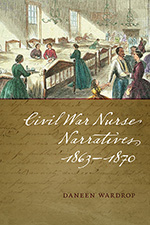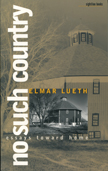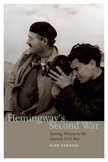Civil War Nurse Narratives, 1863-1870
when prompted by shopping cart
“In Civil War Nurse Narratives, 1863–1870, Daneen Wardrop does what is quite difficult to do: she bridges social and literary history, using each to inform the other. Wardrop uses seven Civil War nursing narratives in new and complex ways, teasing out the work that they do for women’s rights, the complicated racial politics they reveal, and the ways these narratives engaged in nation-building through the individual lives of women. This is an important addition to the field of Civil War women’s history, drawing out new insights from well-loved texts, and introducing lesser-known work that deserves greater attention.”—Lyde Cullen Sizer, author, The Political Work of Northern Women Writers and the American Civil War, 1850–1872
“An important intervention in our understanding of women’s participation in Civil War culture. Wardrop’s narrative is richly detailed and argues persuasively for Northern nurse narratives as a strategically gendered, historically specific subgenre of war literature during the crucial period 1863–1870.”—Vivian Pollak, Washington University in St. Louis
Civil War Nurse Narratives, 1863–1870, examines the first wave of autobiographical narratives written by northern female nurses and published during the war and shortly thereafter, ranging from the well-known Louisa May Alcott to lesser-known figures such as Elvira Powers and Julia Wheelock. From the hospitals of Washington, DC, and Philadelphia, to the field at Gettysburg in the aftermath of the battle, to the camps bordering front lines during active combat, these nurse narrators reported on what they saw and experienced for an American audience hungry for tales of individual experience in the war.
As a subgenre of war literature, the Civil War nurse narrative offered realistic reportage of medical experiences and declined to engage with military strategies or Congressional politics. Instead, nurse narrators chronicled the details of attending wounded soldiers in the hospital, where a kind of microcosm of US democracy-in-progress emerged. As the war reshaped the social and political ideologies of the republic, nurses labored in a workplace that reflected cultural changes in ideas about gender, race, and class. Through interactions with surgeons and other officials they tested women’s rights convictions, and through interactions with formerly enslaved workers they wrestled with the need to live up to their own often abolitionist convictions and support social equality.
By putting these accounts in conversation with each other, Civil War Nurse Narratives productively explores a developing genre of war literature that has rarely been given its due and that offers refreshing insights into women’s contributions to the war effort. Taken together, these stories offer an impressive and important addition to the literary history of the Civil War.






